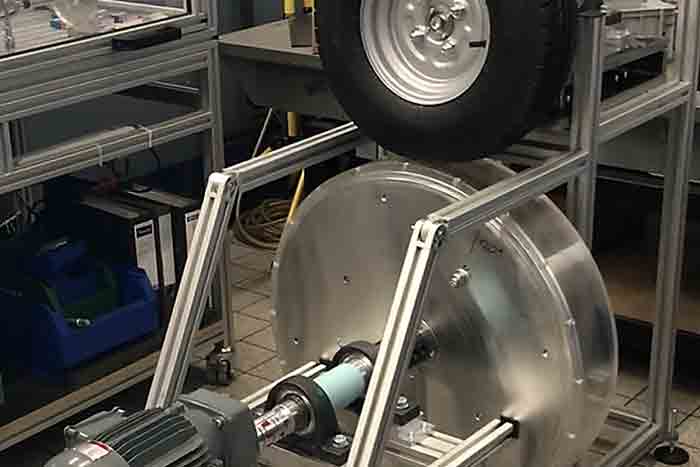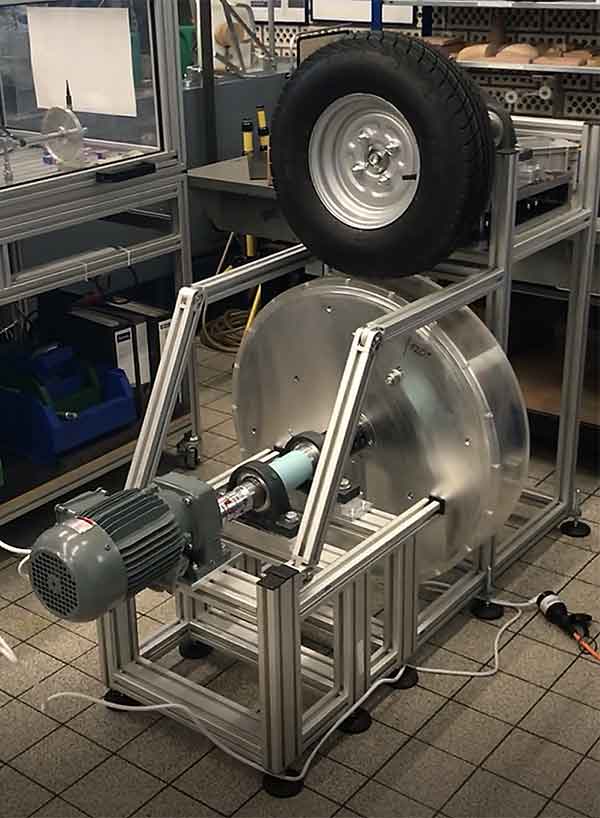©NikomMaelao Production / Shutterstock, ©Willmerding

Test bench for the analysis of movements and deformations in the contact surface of pneumatic tires
Objective
The movements in the contact surface of tires have a great influence on the transferable forces, noise and wear. With the help of the measuring device proposed here, the movements in the contact surface should be recorded under the action of all tire forces (vertical, longitudinal, transverse) and at almost all speeds. It should also be possible to investigate the behaviour of aquaplaning
The measuring principle
A tire drum is used, similar to what is already in use today.The tire is pressed against the rotating drum with the desired wheel load and can also be operated with inclined running or circumferential slip if necessary. In the present drum, however, a transparent hollow cylinder is used. On the opposite side of the tire, a flash of light microscope and/or a camera is arranged.
Alternatively, only one angular element of the drum can be made transparent. In this case, recordings are only taken during stationary scanning when the wheel rolls over the transparent area. This can be useful for larger drum diameters for cost reasons.
It is also conceivable that the drum is watered so that aquaplaning processes occur. This irrigation is cheaper with internal drum test benches because there is less splashing water and the adjustment of the water film thickness is easier.

Figure 1: Demonstrator for a drum test bench for the optical investigation of the processes in the contact surface
The demonstrator
A prototype (see Figure 1) to demonstrate the principle was built and tested. The glass drum has a diameter of almost 1 m. A video camera films the tire contact surface during rotation from the inside of the drum. Speeds of up to 50 km/h are possible. A single image is shown in Fig. 2.

Figure 2: Recording of the running tire by the glass drum
On the basis of the individual images of the contact surface, an evaluation of the movements of the profile elements can be carried out. From the displacements in longitudinal and transverse direction, insights into
– transferable forces,
– abrasion
– noise
win. In aquaplanig experiments, the drainage of the contact area can be observed directly
Conception of a drum for use in tire development
The demonstrator has shown the principle feasibility. Now we offer to build a test bench for tire development. To this end, we want to modify existing test benches.
The dimensions and operation of the drum should be similar to that of conventional tire testing machines. For external drum machines with a diameter of 2 m and internal drum machines with a diameter of 4 m, the strength values and the service life of the glass inserts were mathematically estimated. Apart from the thermal load limit, no disadvantages compared to conventional drum testing machines are to be expected.
If you are interested, we will present the concept and discuss the possibility of an implementation for your house.

